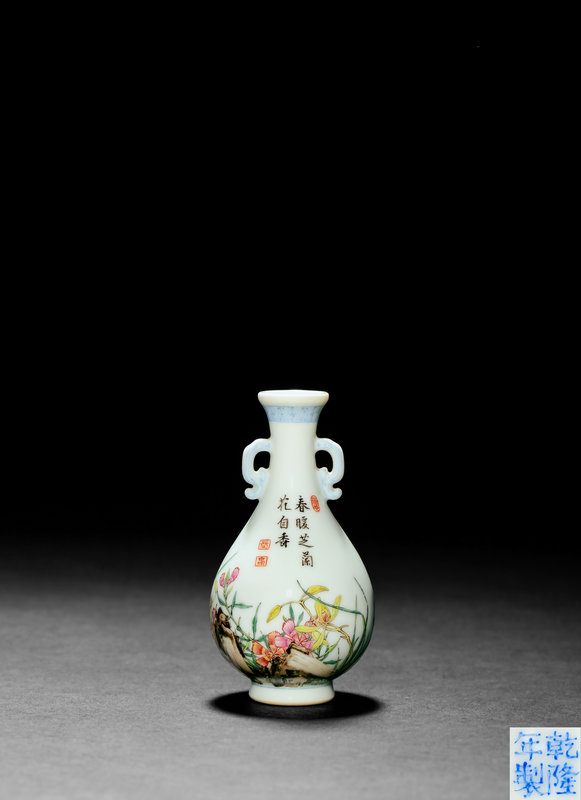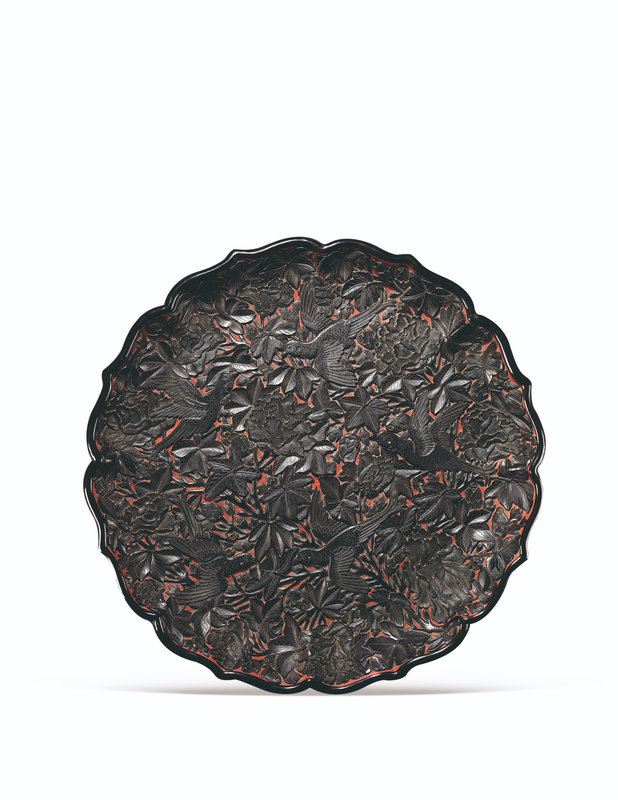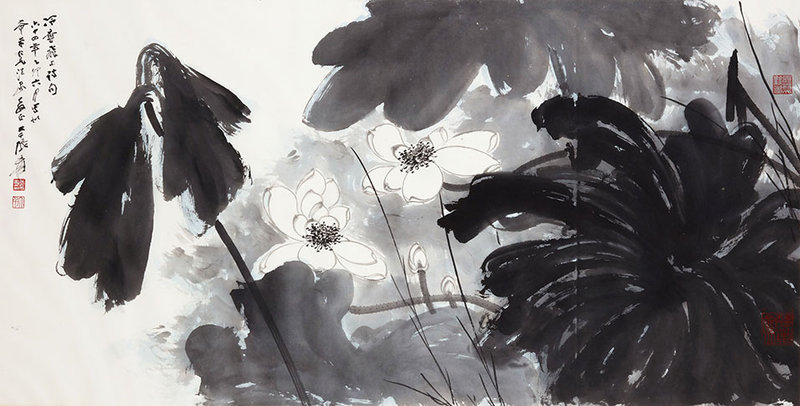Poly Auction Hong Kong announces Spring Auctions 2023 of Chinese art
Vimalakirti Sutra from Tang Dynasty. Ink on paper, hand scroll, 25.5 × 704 cm. Estimate: HKD 1,400,000 – 1,800,000. © Poly Auction Hong Kong Limited
HONG KONG.- Setting sail again to continue its 10th Anniversary success, Poly Auction Hong Kong is pleased to announce the Spring Auctions will take place at Grand Hyatt Hong Kong from 1 to 6 April. Led by A Blue and White ‘Ladies’ Bowl, Chenghua Period, 1465-1487, the Chinese Ceramics and Works of Art Department meticulously selected a collection of treasures with impeccable provenance for the auction. To carry forward the profoundness of Chinese art, the Fine Chinese Paintings and Calligraphy Department proudly showcases Wu Guanzhong’s Tall Trees in Snowy Mountains and assemble a selection of excellent works from all over the world. The auction highlights include – Modern and Contemporary Art, Magnificent Jewels and Important Watches, Noble Handbags and Hype Collectibles, and Rare Wine, Whisky and Chinese Tea, which will be unveiled shortly. In addition, the Taipei Preview at Breeze Exhibition Centre will be held between 18 and 19 March, exhibiting an array of rare and exquisite treasures.
Mr Alex Chang, Managing Director of Poly Auction Hong Kong, remarked, “With the gradual resumption of international exchange and economic rebound, we are more confident than ever to elevate the art market to the next level. Driven by innovation and inheritance spirits, Poly Auction Hong Kong will continue to present Eastern and Western art with the best investment potential. Thanks to our collectors who have walked along the way, their support genuinely empowered us. We are back in full force and poised to astonish the market gain.”
The Chinese Ceramics and Works of Art Department assembles 200 delicate lots, presenting a significant auction. The highlight lots – A Very Rare Blue and White ‘Floral’ Hexagonal Vase, Hu, Mark and Period of Yongzheng and A Blue and White ‘Ladies’ Bowl, Chenghua Period, 1465-1487 – are gaining the attention of the perspicacious collectors and will be offered exclusively. The sale highlights a collection of Ming and Qing porcelains from an important Hong Kong collector. In addition, Chinese antiques such as Ming and Qing jades, archaic porcelains and bronzes, and the art of scholars are treasures of antiquity not to be missed.
A Very Rare Blue and White ‘Floral’ Hexagonal Vase, Hu, Mark and Period of Yongzheng (1723-1735). H 44.5 cm. Estimate: HKD 11,000,000 – 15,000,000. © Poly Auction Hong Kong Limited
Provenance: A Japanese private collection
Note: The vase is in the shape of a flat hexagon, with a slanted mouth, long neck, folded shoulders, and flanked by two tubular handles. The whole body is decorated in blue and white, with lotus patterns painted all over, and the floral heart shape holding the character of “longevity”, with the supplement by fret patterns, sea water patterns, Ruyi head patterns, and deformed lotus petal patterns. The base is inscribed in an underglaze-blue six-character three-line mark. The same type of blue and white hexagonal vases are more common in Qianlong Dynasty, making this Yongzheng Dynasty work a rare piece. Compared to an almost identical pair, collected by the National Palace Museum.
A Blue and White ‘Ladies’ Bowl, Chenghua Period (1465-1487). D 19.5 cm. Estimate: HKD 12,000,000 – 15,000,000. © Poly Auction Hong Kong Limited.
Provenance: An Italian private collection.
Note: The bowl is of an almost hemispherical shape. The outer wall is painted in blue and white with scenes of ladies playing Guqin, playing chess, reading books, and appreciating paintings; forming the four arts of “Qin, Chess, Calligraphy and Painting”. The bottom is painted with scroll patterns. The blue and white porcelain has changed from the solid and unrestrained style of the Yongxuan Imperial Kiln, and is highly praised by the world for its lightness, exquisiteness and elegance of the times.
An archaic bronze ritual wine vessel, zun, Late Shang dynasty, c. 1500 - 1050 B.C. to Early Western Zhou dynasty, 1050 - 771 B.C. H 32.7 cm. Estimate: HKD 12,000,000 – 15,000,000. © Poly Auction Hong Kong Limited.
Provenance: 1. Collection of C.T. Loo
2. An important American collection
3. An European private collection
4. J.J. Lally & Co., New York
5. The Meiyintang collection.
Exhibited: Trésors de la Chine ancienne - Bronzes rituels de la collection Meiyintang, Meiyintang, Paris, 2013, cat. no. 63.
Literature: 1. Yu Xingwu, Shangzhoujinwenyilu (Bronze Inscriptions of Shang and Zhou Dynasties), Science Press, 1957, cat. no.196
2. Chen Mengjia, Yinshangqingtongqifenleitulu (Classification Catalog of Yin Shang Bronze Wares), Vol 1., 汲古書院, Tokyo, 1977, p.84. Chen Mengjia, Yinshangqingtongqifenleitulu (Classification Catalog of Yin Shang Bronze Wares), Vol 2., 汲古書院, Tokyo, 1977, p.689, cat. no. A413. Inscription: Chen Mengjia, Yinshangqingtongqifenleitulu (Classification Catalog of Yin Shang Bronze Wares), Vol 1., 汲古書院, Tokyo, 1977, p.203, cat. no. R147
3. Zhou Fagao, Sandaijijinwencunbu (Three generations of auspicious and golden inscriptions), Tailian Guofeng Publishing House, 1980, cat. no. 147
4. Yan Yiping, Jinwenzongji (Collected Bronze Inscriptions), Yee Wen Publishing Co., Ltd., Taiwan, 1983, Vol.6, p.2572, cat. no. 4665
5. Liu Yu & Wang Tao, A Selection of Early Chinese Bronzes with Inscriptions from Sotheby’s and Christie’s, Lexicographical Publishing House, Shanghai, 2007, cat. no. 158
6. Wu Zhenfeng, Inscriptions and Images of Bronzeware from the Shang and Zhou Dynasties, Shanghai Classics Publishing House, Shanghai, 2012, Vol.20, p.460, cat. no. 11451
7. Bronzes rituels de la colletion, Musée Guimet, France, 2013, p.58, cat. no. 34
8. Chinese Bronzes from the Meiyintang Collection, Meiyintang, Switzerland, 2013, p.104, cat. no. 63.
Note: This piece is in the shape of a gu vessel, with four ridges all over the body, covered with large-scale decorations. The abdomen is decorated with curly-horned beast-mask patterns, and the ring feet are all decorated with zigzag-horned beast-mask patterns. There is a short inscription “Ya Gong Fu Xin” on the inner wall of the vessel. The inscription is framed by the word “Ya”, which should be closely related to the family name. The inscription of “Ya Gong Fu Xin” indicated that the party was an object made by the “Gong” family for the fathers who were named “Xin”.
An archaic bronze ‘dragon’ food vessel, ding, Shang dynasty, c. 1500 - 1050 B.C. H 23.5 cm. Estimate: HKD 5,500,000 – 8,000,000. © Poly Auction Hong Kong Limited.
Provenance: 1. J.J. Lally & Co., New York, USA, 1999
2. Frank Arts Collection, Belgium, 1999
3. Private European Collection, 2011.
Exhibited and literature: 1. J.J. Lally & Co., Ancient China, Jades, Bronzes & Ceramics, New York, 1999
2. Deydier Ch., The Frank Arts Collection, Hong Kong, 2-7 October 2011.
Note: The bowl of the ding food vessel is wide, folding outwards creating a small border. Sitting atop the open rim are two upright parallel loop handles, and supporting the bowl are three outward curling flat legs in the form of kui dragons. The outer wall of the bowl is decorated by a band of décor created with simple lines creating the motifs of ‘taotie’ and scroll clouds. The rim is inscribed with the word Shi. This bronze vessel is one of the finest of its kind and was previously a part of internationally renowned collections such as J.J. Lally & Co, New York, and Frank Arts Collection, Belgium.
A rare small inscribed falangcai handled vase, Blue enamel mark and period of Qianlong. H 9.5 cm Estimate: HKD 3,000,000 – 5,000,000. © Poly Auction Hong Kong Limited.
Provenance: An important Belgian family collection, De SCHRYNMAKERS de DORMAEL, thence by descent within the family.
The vase is elegantly and symmetrically decorated with Falangcai all over the body. The rim and loop handles are painted with blue lined patterns, whilst the vase body is decorated with enamel depicting scenic motifs. Above the scenic motifs is a short passage written in calligraphy, referring to a poem from Ming Dynasty “Tangshang Wen Lanxiang” by Ye ZiQi. The base is inscribed in blue enamel with a four-character mark. This kind of enamel-coloured porcelain was specially produced as playware for Emperor Qianlong. This product is small in size, and suitable for playing in the palm, thus making it even more rarely seen.
A carved black lacquer ‘birds and peony’ dish, Yuan dynasty, 13th -14th century. D 41.3 cm. Estimate: HKD 2,000,000 – 2,500,000. © Poly Auction Hong Kong Limited.
Provenance: Collection of Tokugawa family.
Eight rows of lotus petals of the interior, with round lip and decorated the outside with the lotus. The wooden base is painted with multiple layers of black lacquer and the inner wall is engraved with five ribbon birds wearing peony patterns, implying wealth and longevity. Sixteen magpies are engraved on the outer wall, all in different shapes. Few remaining lacquer wares of this kind can be seen in the Yuan Dynasty. An example that can be used for reference is a ‘Peacock and Peony’ Eight-petal Dish in the Carving The Subtle Radiance Of Colors Treasured Lacquerware In the National Palace Museum, Taipei, National Palace Museum, 2008, p22; and a ‘Peony and Bird-pattern’ Water Chestnut Plate in the collection of Tokugawa Art Museum, Kitamura Art Museum, Japan. There is also a similar piece reserved in the Shandong Museum, see a ‘Black Flower and Bird’ Sunflower Plate in the Zhongguo Qiqi Jinghuai, Fujian Art Publishing House, 2003, no. 188.
A yellow-ground blue and white ‘peaches’ dish, Mark and period of Qianlong D 26.5 cm. Estimate: HKD 1,000,000 – 1,500,000. © Poly Auction Hong Kong Limited.
Provenance: A Hong Kong private collection.
The dish is delicately painted in yellow and blue glaze with floral vines and nine peaches in the centre. The lemon-yellow ground base is inscribed with an underglaze-blue six-character seal mark within a white cartouche. Overall, the texture of this dish is meticulous, the form is symmetrical, and the vibrant juxtaposing colours make this a rare and exemplary piece from the Qing Dynasty royal kilns. This kind of dish can also be seen in The National Palace Museum in Taipei, and The Nanjing Museum.
Wu Guanzhong, Tall Trees in Snowy Mountains. Painted in 1988. Ink and color on paper, mounted, 86 × 69 cm. Estimate: HKD 4,000,000 – 8,000,000. © Poly Auction Hong Kong Limited
Publication: Wu Guanzhong - Kaleidoscope, Plum Blossoms Gallery, 1989, cover and plate 47.
Exhibition: Wu Guanzhong - Kaleidoscope, Plum Blossoms Gallery, Hong Kong, 1989.
Provenance: Private collection in New Zealand, acquired from Plum Blossoms Gallery by the previous owner.
Note: Tall Trees in Snowy Mountains was created at the turning point between the 1980s and 1990s – after Wu Guanzhong experienced the stage of rural realism in the 1970s, and moved towards a simple semi-abstract style in the 1980s. The brush and the lines were simpler and clearer. He extracted the most basic visual features of real-world objects, demonstrating his heart’s natural reflection on the paper under the smooth combinations of points, lines, and surfaces. Elements of beauty from reality were shown in an abstract manner. Throughout Wu Guanzhong’s art career, the 1980s was the heyday of Wu Guanzhong’s ink painting creation. His experimental ink painting greatly influenced the artist’s oil painting style. He combined abstract elements such as points, lines, and surfaces with the unique brush and ink of ink painting and freehand brushwork together and touched the core of traditional culture with a modern formal language that surpassed traditional schema and aesthetic concepts.
Zhang Daqian, Lotus Pond, 1975. Ink and color on paper, mounted, 76 × 152 cm. Estimate: HKD 1,200,000 – 2,200,000 © Poly Auction Hong Kong Limited
The Lotus Pond was painted in 1975. During the creation of this piece, Zhang Daqian’s eye disease intensified and was recuperating in the “Huan Bi An” . The painting was dedicated to Mr Xiping who asked a friend to visit Zhang Daqian and obtain this painting. It can be inferred that the above person may have had contact with the painter. Picture composition is dense, bold, and agile. At first glance, the lotus leaf in full bloom at the lower right corner becomes the point of attention. It occupies nearly half the space of the painting. As Daqian mentioned, painting lotus leaves is “like writing an official script in the Han Dynasty, which is to go backwards in and out”. The shade of lotus leaf between two dependent matches, framed by a white lotus brilliantly. Below the two leaves, the two buds were drawn as if they were newborns, sheltered by their parents. After the lotus leaves and flowers were completed, the painter applied the lotus leaves lightly with cyanine, creating an imagery of “clouds break the moon to make flowers shadow”. The lotus pond in early summer presented a piece of water and air dense and full of vitality.
Fu Baoshi, Boating by the Red Cliff. Painted in 1963. Ink on paper, hand scroll, 90.5 × 22 cm. Estimate: HKD 1,000,000 – 2,000,000. © Poly Auction Hong Kong Limited
Vimalakirti Sutra from Tang Dynasty. Ink on paper, hand scroll, 25.5 × 704 cm. Estimate: HKD 1,400,000 – 1,800,000. © Poly Auction Hong Kong Limited
Since the Tang Dynasty, many Buddhism believers have sought good fortune by copying Buddhist scriptures themselves or paying others, it has also become a social trend at the time. As a result, there was a great demand for sutra copying in the market, and “scholars for copying Buddhist scriptures” came into being. The unique font used by the scholars for copying Buddhist scriptures was dignified, elegant, and suitable for quick writing. This calligraphy style is named the “style of scholars for copying Buddhist scriptures”.
Xu Beihong, Lion. Painted in 1938. Ink and color on paper, mounted, 103 × 93 cm. Estimate: HKD 3,500,000 – 7,000,000. © Poly Auction Hong Kong Limited
Xu Beihong’s painting Lion was created in 1938. A fierce lion was depicted sitting on the rugged and steep rocks and looking into the distance with determination. Its long manes flutter in the wind. Although a storm is approaching, the lion remains fearless and majestic. Completed early in the same year, Xu Beihong’s representative animal-themed work The Wounded Lion (now at the Memorial Hall of Xu Beihong) is a painting of a similar size as Lion. The only differences are that the physicality of the lion and the angle of the rocks were slightly adjusted. In his works, the artist expresses that the Chinese nation would fight against foreign enemies together during the national crisis. The receiver’s name “Mr. Ruoyu” of the painting was written down. “Mr. Ruoyu” refers to Wu Daoan who was the vice chairman of the Guangxi Zhuang Autonomous Region of the Republic of China at the time, as well as a member of the Guizhou National Political Council. He held exhibitions for Xu Beihong in Guangxi, Guizhou, and the artist presented this masterpiece to him as a token of appreciation.
Li Keran, Autumn Scenery. Painted in 1982. Ink and color on paper, hanging scroll, 68 × 48.5 cm. Estimate: HKD 400,000 – 800,000. © Poly Auction Hong Kong Limited
Literature: 1. Yu Xingwu, Shangzhoujinwenyilu (Bronze Inscriptions of Shang and Zhou Dynasties), Science Press, 1957, cat. no.196 2. Chen Mengjia, Yinshangqingtongqifenleitulu (Classification Catalog of Yin Shang Bronze Wares), Vol 1., 汲古書院, Tokyo, 1977, p.84 Chen Mengjia, Yinshangqingtongqifenleitulu (Classification Catalog of Yin Shang Bronze Wares), Vol 2., 汲古書院, Tokyo, 1977, p.689, cat. no. A413 Inscription: Chen Mengjia, Yinshangqingtongqifenleitulu (Classification Catalog of Yin Shang Bronze Wares), Vol 1., 汲古書院, Tokyo, 1977, p.203, cat. no. R147

/https%3A%2F%2Fprofilepics.canalblog.com%2Fprofilepics%2F1%2F0%2F100183.jpg)
/https%3A%2F%2Fstorage.canalblog.com%2F03%2F02%2F119589%2F96711876_o.jpg)
/https%3A%2F%2Fstorage.canalblog.com%2F11%2F31%2F119589%2F94773502_o.jpg)
/https%3A%2F%2Fstorage.canalblog.com%2F20%2F83%2F119589%2F94772815_o.jpg)
/https%3A%2F%2Fstorage.canalblog.com%2F26%2F72%2F119589%2F75604929_o.jpg)
/https%3A%2F%2Fstorage.canalblog.com%2F59%2F60%2F119589%2F26458628_o.jpg)
















/image%2F1371349%2F20240416%2Fob_2a8420_437713933-1652609748842371-16764302136.jpg)
/image%2F1371349%2F20240414%2Fob_83ee65_2024-nyr-22642-0954-000-a-blue-and-whi.jpg)
/image%2F1371349%2F20240414%2Fob_15808c_2024-nyr-22642-0953-000-a-blue-and-whi.jpg)
/image%2F1371349%2F20240414%2Fob_e54295_2024-nyr-22642-0952-000-a-rare-blue-an.jpg)